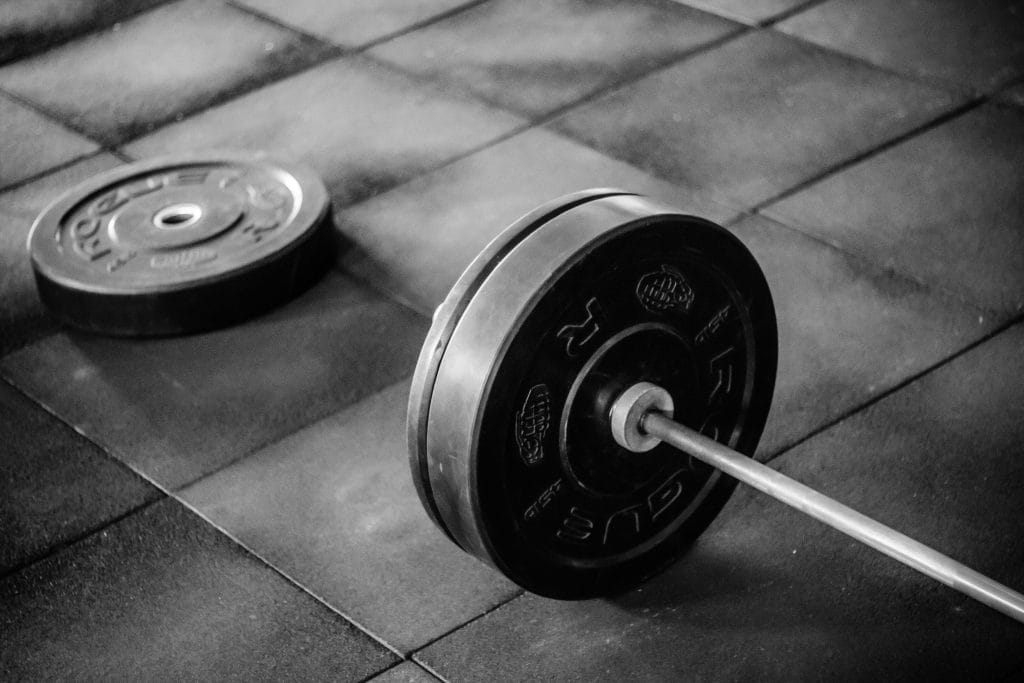
In this article, we will discuss some important safety tips for using vibrating foam rollers. Whether you are a fitness enthusiast or recovering from an injury, these devices can provide great relief to your muscles. However, it’s crucial to use them correctly to avoid any potential risks or injuries. We will explore common questions about vibrating foam rollers and provide you with valuable information to ensure a safe and enjoyable experience. So, let’s dive in and learn what you need to know about using these beneficial tools.

This image is property of images.pexels.com.
Table of Contents
Understanding Vibrating Foam Rollers
What are vibrating foam rollers?
Vibrating foam rollers are a type of self-myofascial release tool that combines the benefits of foam rolling with vibrations. They are designed to provide targeted deep tissue massage and help release tight muscles and fascia.
How do vibrating foam rollers work?
Vibrating foam rollers work by using a motor to create vibrations that penetrate deep into the muscles. These vibrations help to stimulate blood flow, increase flexibility, and reduce muscle tension. The combination of foam rolling and vibrations helps to break down knots and adhesions in the muscles, promoting faster recovery and better overall muscle health.
Benefits of using vibrating foam rollers
Using vibrating foam rollers can offer several benefits for your body and overall well-being. Some of the key benefits include:
-
Enhanced muscle recovery: The vibrations from the foam roller help to stimulate blood flow, which can speed up the recovery process and reduce muscle soreness after intense workouts.
-
Increased flexibility and range of motion: The vibrations and pressure from the foam roller help to stretch and release tight muscles, improving flexibility and enhancing joint mobility.
-
Decreased muscle pain and tension: By targeting trigger points and knots in the muscles, vibrating foam rollers can help alleviate muscle pain and tension, providing relief from discomfort and tightness.
-
Improved circulation: The vibrations created by the foam roller can enhance blood flow to the muscles, delivering oxygen and nutrients more efficiently and removing waste products, which aids in tissue repair and recovery.
-
Enhanced muscle performance: Using vibrating foam rollers as part of your warm-up routine can help activate and prepare your muscles for physical activity, improving their performance during exercise or sports.
Different types of vibrating foam rollers
There are various types of vibrating foam rollers available in the market, each offering unique features and benefits. Some common types include:
-
Handheld vibrating foam rollers: These compact and portable rollers can be easily held and moved along different muscle groups. They are ideal for targeting specific areas and providing concentrated vibrations.
-
Full-size vibrating foam rollers: These larger foam rollers offer a wider surface area and are suitable for rolling larger muscle groups, such as the back and legs. They provide a more generalized vibration and are suitable for overall muscle recovery.
-
Variable intensity vibrating foam rollers: These rollers allow you to adjust the intensity of the vibrations to your desired level. They are suitable for individuals who prefer different levels of pressure and vibration for their muscles.
Choosing the Right Vibrating Foam Roller
Considerations for selecting a vibrating foam roller
When choosing a vibrating foam roller, consider the following factors:
-
Intensity level: Determine the intensity level of the vibrations you prefer. Some individuals may need higher intensity for deep tissue massage, while others may benefit from lower intensity for gentle muscle relaxation.
-
Texture and density: Consider the texture and density of the foam roller. Softer foam rollers with a textured surface are suitable for beginners or individuals with sensitive muscles, while denser foam rollers offer deeper penetration for more advanced users.
-
Size and shape: Choose a foam roller that fits your body and muscle needs. Smaller rollers are ideal for targeted muscle release, while larger ones provide broader coverage for bigger muscle groups.
Choosing the appropriate intensity level
The intensity level of the vibrations can significantly impact how effective the foam roller is in targeting your muscles. If you are new to vibrating foam rollers or have sensitive muscles, start with a lower intensity level and gradually increase as your muscles become accustomed to the vibrations.
Consider your individual needs and preferences, such as the level of muscle soreness or tension you typically experience. It is essential to find a balance between an intensity level that provides enough pressure to release tightness and discomfort without causing any pain or injury.
Selecting the right texture and size
The texture and size of the foam roller can also influence its effectiveness and your level of comfort during use.
For beginners or individuals with sensitive muscles, a foam roller with a softer texture and a textured surface can provide a gentler massage experience. This type of foam roller is suitable for individuals who may be more sensitive to pressure or have a lower pain tolerance.
On the other hand, if you prefer a more intense massage and have experience with foam rolling, a foam roller with a denser texture and a smooth surface may be more suitable. This type of foam roller allows for deeper penetration into the muscles and can help release more stubborn knots and adhesions.
The size of the foam roller should also be considered based on your body size and the specific muscle groups you plan to target. Smaller foam rollers are more suitable for more precise and targeted rolling, while larger foam rollers provide better coverage for larger muscle groups like the back and legs.
Precautions Before Using Vibrating Foam Rollers
Consulting with a healthcare professional
Before incorporating vibrating foam rollers into your fitness or recovery routine, it’s a good idea to consult with a healthcare professional, especially if you have underlying health conditions or are recovering from an injury or surgery. They can provide personalized advice and guidance on how to use the foam roller safely and effectively.
Checking for any medical conditions or injuries
It’s essential to be aware of any medical conditions or injuries that may affect your ability to use vibrating foam rollers. Certain conditions, such as osteoporosis or blood clotting disorders, may require special precautions or even the avoidance of foam roller use altogether.
If you have any injuries, such as muscle strains or sprains, it is crucial to allow adequate time for healing before using a foam roller. Consult with a healthcare professional to determine if foam rolling is safe and beneficial for your specific injury.
Avoiding sensitive areas and open wounds
When using vibrating foam rollers, it is important to avoid sensitive areas, such as the joints, face, or throat, where vibration could potentially cause discomfort or harm. Additionally, avoid rolling directly over open wounds, bruises, or areas of inflammation to prevent further irritation or injury.
Always be mindful of your body and listen to any warning signs, such as increased pain or discomfort, during foam rolling. If you experience any unusual or severe pain, stop using the foam roller and consult with a healthcare professional.
Proper Technique for Using Vibrating Foam Rollers
Starting with gentle pressure
When using vibrating foam rollers, it is best to start with gentle pressure and gradually increase as needed. This allows your muscles to acclimate to the vibrations and helps prevent any unnecessary pain or discomfort. Apply a moderate amount of pressure to the targeted muscle group and adjust as necessary to find the level that works best for you.
Maintaining a slow and controlled motion
To ensure proper muscle release and prevent injury, it is important to maintain a slow and controlled motion when using vibrating foam rollers. Avoid quick or jerky movements, as this can strain the muscles or potentially cause overstretching. Instead, roll slowly along the muscle, focusing on any trigger points or areas of tension.
Avoiding excessive pressure or rolling too quickly
While it may be tempting to apply excessive pressure or roll quickly with a vibrating foam roller, it is essential to avoid these practices. Applying too much pressure can cause pain or bruising, while rolling too quickly can prevent the vibrations from adequately penetrating the muscles. Remember, the goal is to provide targeted and controlled pressure to release tension and knots.
Targeting specific muscle groups
When using vibrating foam rollers, consider targeting specific muscle groups that may be tight or in need of release. Focus on areas such as the calves, quadriceps, hamstrings, glutes, and back. By targeting specific muscle groups, you can maximize the effectiveness of the foam roller and tailor your self-myofascial release routine to your individual needs.

This image is property of images.pexels.com.
Safety Measures During Vibrating Foam Roller Use
Avoiding prolonged or excessive usage
While vibrating foam rollers can provide significant benefits, it is important to avoid prolonged or excessive usage. Using a foam roller for extended periods or applying too much pressure can lead to muscle soreness, bruising, or even tissue damage. Set a reasonable time limit, typically 10-15 minutes per muscle group, and listen to your body’s feedback to prevent overuse.
Listening to your body’s feedback
Your body is an excellent source of feedback when using vibrating foam rollers. Pay attention to how your muscles feel during and after foam rolling. If you experience increased pain, discomfort, or unusual sensations, it may be a sign that you are applying too much pressure or using the foam roller incorrectly. Adjust your technique or intensity level accordingly to ensure a safe and effective foam rolling session.
Monitoring for any discomfort or pain
Discomfort or pain during foam rolling should not be ignored. While some discomfort can be expected, especially when targeting tight muscles or trigger points, sharp or severe pain may indicate an issue. If you experience severe pain or suspect an injury, stop using the foam roller and seek medical attention if necessary.
Using the roller on stable and even surfaces
To ensure safety and stability during foam rolling, it is essential to use the roller on stable and even surfaces. Avoid using the foam roller on uneven or slippery surfaces that could increase the risk of falls or instability. A stable surface, such as a yoga mat or gym floor, provides a secure base for effective foam rolling.
Additional Tips for Safe Usage
Warming up before and cooling down after use
Before using a vibrating foam roller, it is beneficial to warm up the muscles with dynamic stretching or light cardio exercises. This helps increase blood flow and prepares the muscles for foam rolling. Additionally, after using the foam roller, perform static stretching exercises to cool down and lengthen the muscles.
Using the foam roller in a well-lit area
Ensure that you use the vibrating foam roller in a well-lit area to have a clear view of the surface and your body positioning. This helps reduce the risk of slipping or using improper technique, promoting a safer and more effective foam rolling experience.
Maintaining proper posture and alignment
Maintaining proper posture and alignment during foam rolling is crucial for effective muscle release and injury prevention. Keep your core engaged, shoulders relaxed, and maintain a neutral spine. Avoid slouching or arching the back, as it can strain the muscles and potentially lead to discomfort or injury.
Keeping the roller clean and hygienic
To maintain hygiene and prevent the spread of bacteria, clean your vibrating foam roller regularly. Follow the manufacturer’s instructions for cleaning, using mild soap and warm water or specialized foam roller cleaners. Allow the roller to dry completely before storing it.

This image is property of images.pexels.com.
Common Mistakes to Avoid
Using the foam roller on bony prominences
Avoid applying direct pressure to bony prominences, such as the knee cap, hip bone, or spine. These areas have less muscle mass and are more sensitive to pressure. Instead, focus on rolling the muscles surrounding these areas to indirectly release tension and promote overall muscle health.
Rolling directly on the lower back
The lower back is a sensitive area that requires gentle and careful treatment. Avoid rolling directly on the lower back to prevent unnecessary pressure on the spine. Instead, focus on the surrounding muscles, such as the glutes and hamstrings, to indirectly release tension in the lower back.
Applying excessive pressure on sensitive areas
Sensitive areas such as the neck, face, or throat should be avoided when using a vibrating foam roller. These areas are more delicate and can be easily irritated or injured by excessive pressure or vibrations. If you experience discomfort or pain in these areas, stop using the foam roller and consult with a healthcare professional.
Ignoring any pain or discomfort during use
While some discomfort can be expected during foam rolling, it is important to pay attention to any pain or discomfort that feels unusual or severe. Pain should never be ignored, as it may indicate an underlying issue or incorrect technique. If you experience pain or discomfort, stop using the foam roller and seek professional advice if necessary.
Cleaning and Maintenance of Vibrating Foam Rollers
Cleaning instructions
To keep your vibrating foam roller clean and hygienic, follow these cleaning instructions:
-
Start by wiping the roller with a clean cloth to remove any surface dirt or sweat.
-
Fill a bucket or sink with warm water and add a mild soap or foam roller cleaner.
-
Immerse the roller in the water and use a soft brush or cloth to scrub it gently.
-
Rinse the roller thoroughly with clean water until all soap residue is removed.
-
Allow the foam roller to air dry completely before storing it.
Storing the foam roller properly
To maintain the longevity of your vibrating foam roller, store it properly when not in use. Keep it in a cool and dry place, away from direct sunlight or extreme temperature changes. Avoid placing heavy objects on top of the roller, as it could cause deformation or damage.
Replacing worn-out or damaged rollers
Over time, foam rollers can wear out or become damaged. It is important to regularly check your vibrating foam roller for any signs of wear, such as cracks, dents, or loss of cushioning. If you notice any damage or if the foam roller no longer provides effective vibration, it may be time to replace it.

This image is property of images.unsplash.com.
When to Avoid Using Vibrating Foam Rollers
During pregnancy
Pregnant women should exercise caution when using vibrating foam rollers. The vibrations and pressure could potentially impact the fetus or cause discomfort. It is advisable to consult with a healthcare professional before using a foam roller during pregnancy.
If you have certain medical conditions
If you have certain medical conditions, such as osteoporosis, deep vein thrombosis, or any other condition that affects blood clotting or bone density, it is important to avoid using vibrating foam rollers. These conditions can increase the risk of injury or adverse effects. Consult with a healthcare professional for personalized advice.
If you are recovering from an injury or surgery
If you are recovering from an injury or surgery, it is essential to follow the guidance of your healthcare professional. Foam rolling may not be suitable or recommended during the recovery process, especially in the immediate post-surgical phase. Always consult with your healthcare team to determine when it is safe to incorporate foam rolling into your rehabilitation routine.
Conclusion
Vibrating foam rollers can be valuable tools for muscle recovery, flexibility enhancement, and overall muscle health. However, it is crucial to use them safely and responsibly to prevent injury or discomfort. By following the proper techniques, safety measures, and cleaning guidelines outlined in this article, you can enjoy the many benefits of vibrating foam rollers while minimizing the risk of adverse effects. Remember to listen to your body, consult with a healthcare professional when necessary, and always prioritize safety during foam rolling sessions.

This image is property of images.unsplash.com.





























